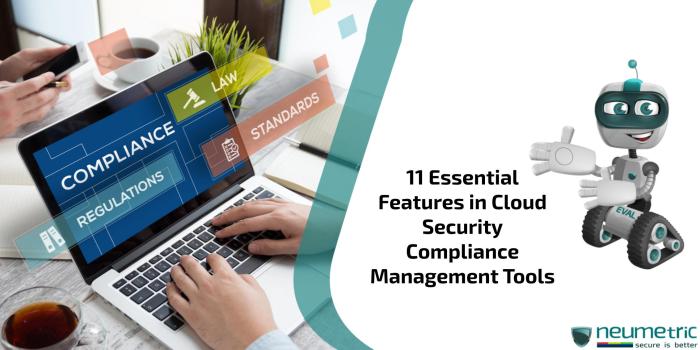Diving into the realm of Secure IT automation tools for compliance management, this introduction sets the stage for a deep dive into how automation tools play a crucial role in ensuring regulatory compliance.
The following paragraph will provide a comprehensive overview of the key features of these tools and how they aid in monitoring and enforcing compliance regulations.
Introduction to Secure IT Automation Tools for Compliance Management

IT automation tools play a crucial role in compliance management by helping organizations adhere to regulatory requirements efficiently and effectively. These tools streamline processes, reduce human error, and ensure consistent adherence to compliance standards.
Importance of Secure Automation Tools in Ensuring Regulatory Compliance
- Secure automation tools offer encryption and authentication features to protect sensitive data from unauthorized access, ensuring compliance with data privacy regulations.
- Automated workflows reduce the risk of manual errors in compliance processes, maintaining accuracy and consistency in regulatory adherence.
- Real-time monitoring capabilities provided by automation tools enable quick identification of compliance issues, allowing timely remediation to prevent violations.
Streamlining Compliance Processes with Automation Tools
- Automation tools automate repetitive tasks such as data collection, analysis, and reporting, saving time and resources for compliance teams.
- Workflow automation ensures standardized processes across the organization, facilitating easier audits and demonstrating a commitment to compliance.
- Integration with existing systems and applications allows seamless data exchange and collaboration, enhancing overall compliance management efficiency.
Key Features of Secure IT Automation Tools
Secure IT automation tools play a crucial role in ensuring compliance management by offering essential features that help monitor and enforce regulations effectively.
Essential Features of Secure IT Automation Tools:
- Policy Management: Allows for the creation, implementation, and enforcement of compliance policies across the organization.
- Automated Auditing: Conducts regular audits to identify non-compliance issues and generate reports for remediation.
- Role-Based Access Control: Ensures that only authorized personnel can access sensitive data and make changes to compliance settings.
- Real-Time Monitoring: Constantly monitors systems and networks to detect any deviations from compliance standards.
- Incident Response Automation: Automates responses to security incidents and compliance breaches to minimize impact.
How Secure IT Automation Tools Help in Compliance Management:
These tools streamline compliance processes, reduce human error, and provide visibility into the organization's security posture. By automating routine tasks, they free up resources to focus on strategic initiatives and proactively address compliance issues.
Examples of Leading IT Automation Tools for Compliance Management:
| Tool | Key Features |
|---|---|
| Ansible | Infrastructure as Code, Playbook Automation, Agentless Architecture |
| Chef | Configuration Management, Continuous Automation, Compliance Reporting |
| Puppet | Orchestration, Configuration Automation, Node Management |
Implementation of Secure IT Automation Tools

Implementing secure IT automation tools for compliance management involves several key steps to ensure effective deployment and integration with existing frameworks.
Configuration and Deployment Best Practices
- Define clear objectives and requirements before selecting automation tools to ensure they align with compliance needs.
- Involve stakeholders from IT, compliance, and security teams to establish a comprehensive strategy for tool deployment.
- Conduct thorough testing of the automation tools in a controlled environment before full-scale deployment to identify any issues or gaps.
- Implement proper access controls and permissions to restrict unauthorized access to the automation tools and sensitive compliance data.
- Regularly update and maintain the automation tools to address evolving compliance requirements and security vulnerabilities.
Integrating Automation Tools with Existing Compliance Frameworks
- Map out the current compliance processes and identify areas where automation can streamline repetitive tasks and enhance efficiency.
- Ensure seamless integration of automation tools with existing compliance tools and systems to avoid duplication of efforts and data inconsistencies.
- Provide training and support to personnel responsible for using the automation tools to maximize their effectiveness and ensure proper utilization.
- Monitor and evaluate the performance of the automation tools regularly to identify areas for improvement and optimization.
Benefits of Using Secure IT Automation Tools for Compliance Management

Secure IT automation tools offer numerous advantages for organizations looking to streamline their compliance management processes. These tools not only enhance efficiency but also improve accuracy and reliability in compliance tasks.
Enhanced Efficiency
Implementing secure IT automation tools can significantly reduce the time and effort required to perform compliance tasks. By automating repetitive processes, organizations can free up valuable resources and allocate them to more strategic initiatives.
Improved Accuracy
Automation tools eliminate the risk of human error in compliance activities, ensuring that tasks are performed consistently and accurately. This reduces the likelihood of compliance violations and helps organizations maintain a strong regulatory standing.
Enhanced Reliability
Secure IT automation tools provide a reliable framework for managing compliance tasks, offering a consistent and standardized approach to regulatory requirements. This helps organizations ensure that all compliance activities are conducted in a reliable and systematic manner.
Real-world Examples
Many organizations across various industries have benefited from the adoption of secure IT automation tools for compliance management. For instance, a multinational financial institution successfully implemented automation tools to streamline its regulatory reporting processes, resulting in significant time savings and improved accuracy in compliance submissions.
Outcome Summary

In conclusion, this discussion sheds light on the benefits and importance of implementing Secure IT automation tools for compliance management, emphasizing their role in enhancing efficiency and accuracy in compliance processes.
Essential Questionnaire
What are the main benefits of using Secure IT automation tools for compliance management?
Secure IT automation tools help in improving efficiency, accuracy, and reliability in compliance processes while ensuring regulatory requirements are met consistently.
How can organizations integrate automation tools with existing compliance frameworks?
Organizations can integrate automation tools by following best practices, such as thorough testing, proper configuration, and seamless deployment within existing compliance frameworks.
Which are some leading IT automation tools known for their security features?
Some examples of leading IT automation tools known for their security features include Ansible, Puppet, and Chef. These tools are widely used for their robust security measures.





![What is IT Project Management? [2023] • Asana](https://business.mardinata.com/wp-content/uploads/2025/10/project-management-industries-120x86.jpg)




